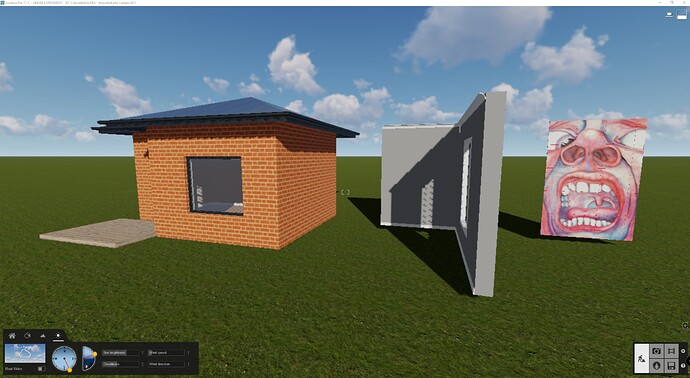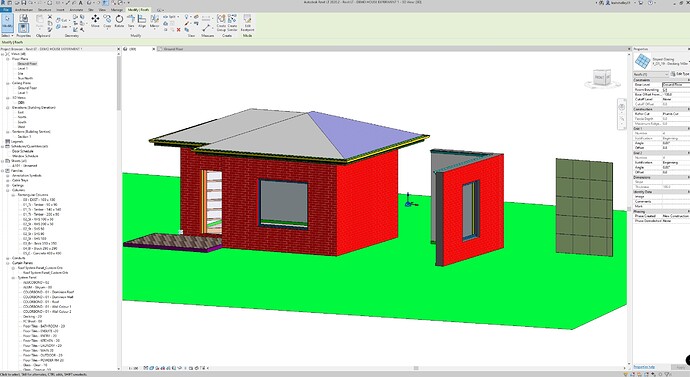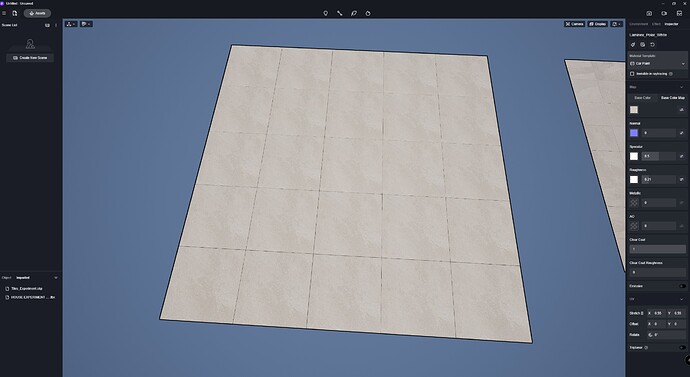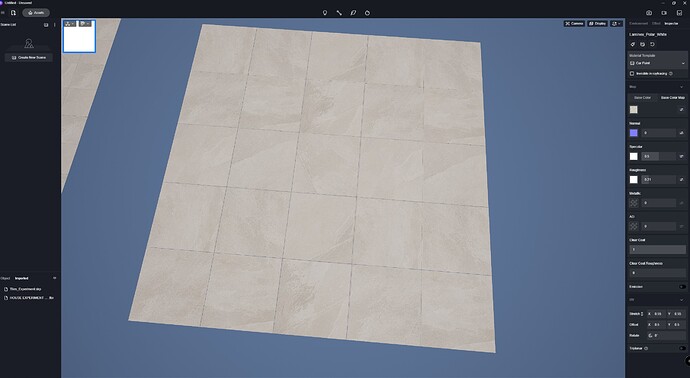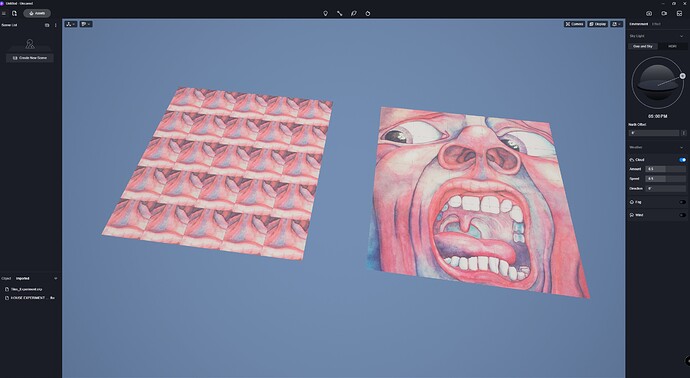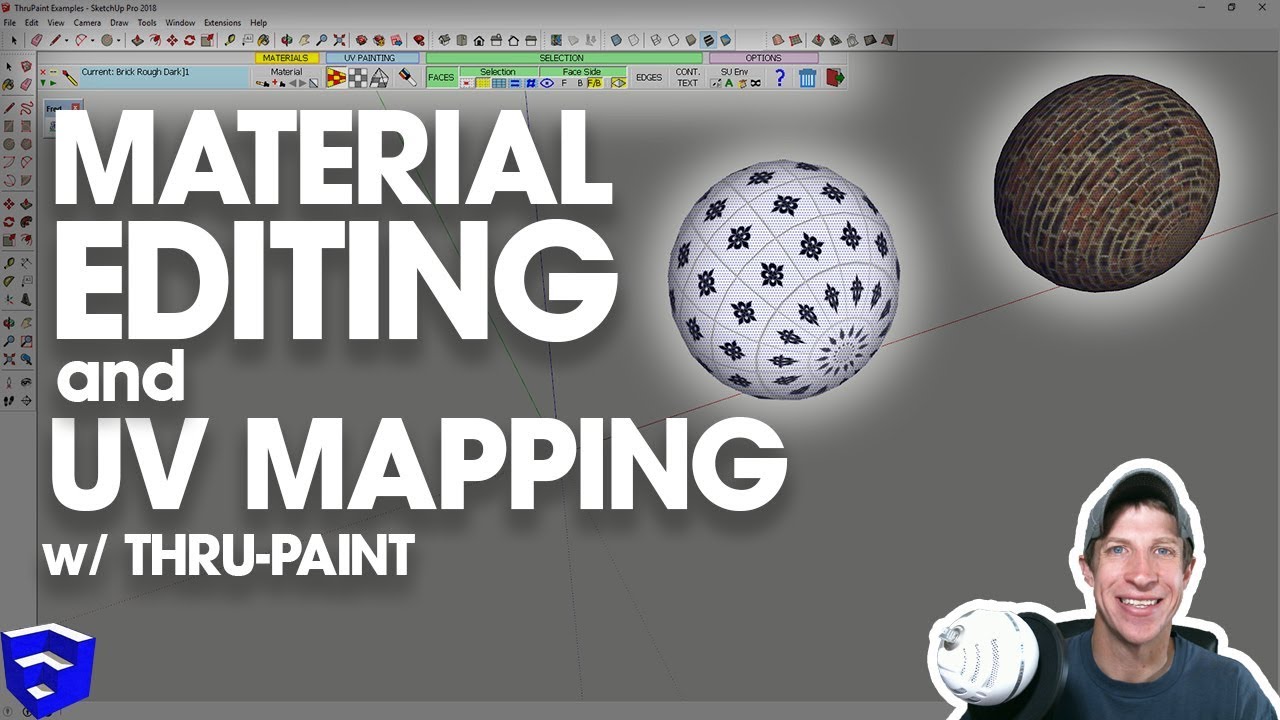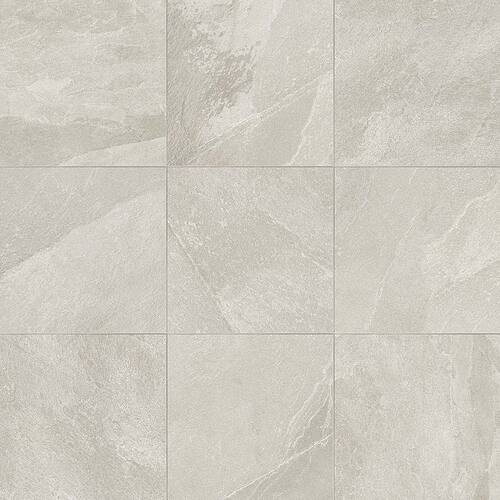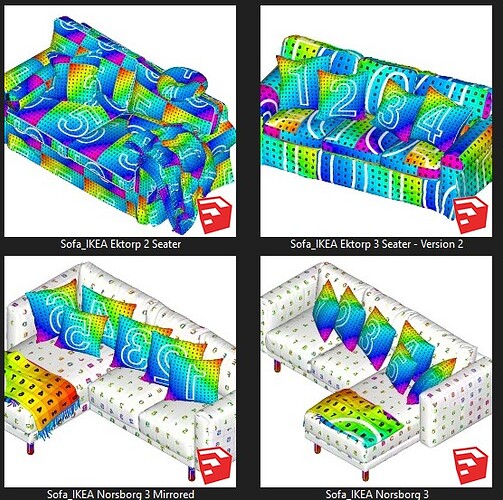@Leah no worries, am always here.
feel free to post them.
Hi Karam,
I have completed some experiments and I have discovered that my proposed new workflow from Revit LT to D5 was flawed.
I can see that D5 has no issue swapping one project for another while retaining materials when using the plug-in for ‘FULL REVIT’. Please view my attached short video ‘DEMO 1…’
I currently use Revit LT (not FULL REVIT) and so does most of the office staff. The current workflow from Revit LT is to export as a .dwg file and import it into LUMION. There are minor workflow issues (as long as Revit LT Wall, Floor, Roof etc families are properly structured / numbered so the hierarchy of materials don’t change. Families such as Doors, Windows, Casework should have Object Styles assigned). Please view my attached short video ‘DEMO 2…’ to see the workflow for updating designs without having to re-apply materials.
The House Swap test confirmed that the workflow from Revit LT to LUMION via .dwg export works fine. See video ‘DEMO 3…’
I was desperate to make Revit LT work with D5 so that everyone used the same software that I believed to be the best for the long run. I therefore tested all export options from Revit LT and converted files using Simlab Composer so that I could import them into D5. I thought the best solution was to export as an IFC file (as materials and smooth curves are maintained) and then convert it into an .fbx file. I was wrong as materials are assigned a number in front of them (eg: the material for external walls in House 1 is ‘8083__WALL - Brick’, whereas the material for external walls in House 2 is ‘10451_WALL - Brick’. I have no idea why numbers are added to the material names). Please see video ‘DEMO 4’.
My sincere apologies. The issue I had was not the fault of D5. It was a problem with the .ifc to .fbx export.
Unfortunately this discovery doesn’t help my case to swap to D5. I am now back to square one. I will have to do some more experiments or may have to wait until D5 introduces more file import options.
Thank you so much for your support.
With kindest regards,
Leah
![]() DEMO 1_D5 - House Swap Test - FULL REVIT 2022.mp4
DEMO 1_D5 - House Swap Test - FULL REVIT 2022.mp4![]()
![]() DEMO 2_LUMION - Project Swap with another - RE…
DEMO 2_LUMION - Project Swap with another - RE…![]()
![]() DEMO 3_LUMION - House Swap Test - REVIT Lt to d…
DEMO 3_LUMION - House Swap Test - REVIT Lt to d…![]()
![]() DEMO 4_LUMION - House Swap Test - REVIT Lt to i…
DEMO 4_LUMION - House Swap Test - REVIT Lt to i…![]()
Hi Karam,
Could you please let me know if you were able to download my videos. I wasn’t asked to click the link ‘share’ button, which was odd.
Cheers,
Leah
Hello @Leah,
Regarding the videos, I think you need to make them publicly available for me to be able to see them, but no worries I got all the information I need from the reply it self.
I believe those numbers being added to as a prefix to the materials are the Id of that material in Revit, and they are the ones that are messing up your workflow.
If you really want to swap projects without using Full Revit version and D5 Revit Exporter, then you can easily solve this problem, you may create a simple Dynamo script that strips out this prefix of materials by splitting the material name by “__” then deleting the first index which is the ID it self, and voila, you got clean material names that could be remembered between D5 projects 
Just do this fix on each .IFC file you export before converting it to .FBX, and you’re pretty much done.
If you don’t have any individual in the office who can handle Dynamo, then please let me know.
I’ll perhaps spare some time to write this script for you, it should be fairly easy. but no promises that I’ll finish it until the next weekend.
Edit: You’d need to use open source Dynamo from https://dynamobim.org/ to write the script
As Dynamo inside Revit isn’t included in Revit LT
Kind Regards,
Karam
Hi Karam,
That sounds very interesting. I have had no experience with Dynamobim, so I will try my best to learn more about it via the website link you provided. I will also continue to experiment exporting files, including bringing them into Rhino. I was trying to avoid bringing files into a ‘middle-man’ software program as I am the only one that uses Rhino. Work-mates would not be happy. I will have to test which option would be the least disruptive to workflow.
I have reattached my videos for you in the hope that you could view them this time.
I will let you know how I progress.
With many thanks and kind regards
Leah
![]() DEMO 4_LUMION - House Swap Test - REVIT Lt to i…
DEMO 4_LUMION - House Swap Test - REVIT Lt to i…
![]() DEMO 2_LUMION - Project Swap with another - RE…
DEMO 2_LUMION - Project Swap with another - RE…
Hi Karam,
I have looked at Dynamobim, but unfortunately I found it overwhelming. I also do not have any colleagues that are familiar with it. I have also been learning more about .ifc export options (inc. testing) from Revit. I was hoping to have found a solution before I bothered you again, but unfortunately I have been beaten.
I have sent a message to the Autodesk forum regarding .fbx and .ifc export. I have attached the link for your interest.
https://forums.autodesk.com/t5/revit-architecture-forum/restore-fbx-export-function/td-p/10692192
If I have no luck with this, it would be wonderful to try your dynamo script.
In the meantime, would you be able to give me an idea of what the workflow would look like from Revit LT to D5 with this solution? eg: Export Revit LT as .IFC > open .IFC in DynamoBIM and run script? > Export from DynamoBIM as .fbx? or would I need to then open Simlab Composer to convert the .IFC to .Fbx?
With kindest regards,
Leah
Hi Karam,
Unfortunately I have not had any luck with either an .ifc or .fbx workflow suggestion for Revit LT from Autodesk.
I was hoping to save you the work in creating a Dynamo script, but I have sadly come to a dead end.
I would be most grateful (and I am sure it will also help other Revit LT users) if you could try to create a Dynamo script that removes the material ID numbers from the beginning of each Revit LT material.
I wish I could have been more independent by knowing how to use Dynamo, but sadly I am defeated with this one.
With kindest regards,
Leah
Karam, any chance the revit exporter can reference network materials in its next release. this is a deal breaker for our company. thanks!
Missing Revit Textures Maps - Get Help / support - D5 RENDER FORUM
Hi Karam,
I have had some revelations regarding Revit LT .ifc export converted to .fbx, therefore I would like to relieve you of writing a Dynamo script to remove numbers from the beginning of each material name.
I thought all .ifc to .fbx converters produced the same results, so I was really surprised that they all produce different results. I was converting .ifc files into .fbx files using Simlab Composer 9, but discovered that numbers were added to the beginning of material names. This caused the ‘House Swap Test’ to fail and therefore there would be continuous workflow problems within D5 Render.
I tested many different file converters.
I discovered that Filestar – FREE from
https://filestar.com/download/
produced an .fbx file with clean material names (ie: no numbers or any other info added to the material names meaning they would be consistent from project to project). Revit composite walls are still a problem though because different materials were not recognised on either side of the wall.
I also tested the following but found issues with them.
-
Cadexchanger – Too fancy and Revit material names were not recognised.
-
3D-Convert.com – Could not recognise Revit .ifc files so I couldn’t even test it.
-
Automapki – Too fancy. Numbers and additional info were added to material names.
-
Datakit – Cross Manager. ??? Still hopeful. I have asked ‘Central Innovation’ for a trial version.
-
Aspose – IFC to OBJ. Most of the model was missing. The house looked like a construction site.
-
NCH Software – IFC to OBJ. Model was mirrored and there were no materials.
I will also ask ‘Building Smart’ (developer of .ifc) for advice.
I also discovered that Twinmotion can distinguish different materials on either side of a Revit composite wall (exported out as an .fbx). Could D5 please look into how Twinmotion is able to achieve this (Hierarchy - ‘Collapse All’ was employed) and perhaps introduce this function into future D5 updates?
With kindest regards,
Leah
Hi again Karam,
Another thought…It would be even better if D5 could simply allow for .ifc import (that could recognise different materials on either side of a composite element), rather than needing an .ifc to .fbx converter.
.ifc import would allow Revit LT and ArchiCAD SE users (I was able to test ArchiCAD SE to see if it would be better than Revit LT. Unfortunately I would have the same issue of having to convert either a .dwg or . ifc into an .fbx file) to use D5 as their ‘go-to’ visualisation software.
I will wait for your reply and also add the request to the Voice of Users in the hope that it gets some votes.
With kind regards,
Leah
Hi Leah,
I think you should export to a SketchUp file and all your problems will be solved.
Then you can open in D5.
@cpl_wdsk This is one of my priorities to support for next release, let’s see how it goes.
@Leah I see, we cannot simply support IFC natively, as it is almost limited to BIM software, and while we have an official exporter, I don’t think it will be worth to implement native IFC importing function, especially each BIM software deals with IFC in a different ways, and many standards changes in this format very quickly.
That being said, I’d like you to provide me with an .IFC file and a converted .FBX of yours, I’ll tinker a bit with it and see if I can remove the material prefixes
And by the way, @gelbuilding idea might also work, you may export it to Sketchup and then continue to D5, try that.
Hi George and Karam,
Firstly, thank you George for your suggestion. It is so nice to have fellow users step in to help.
I do use both SketchUp and Rhino, so I have been experimenting with both of them. I haven’t come up with a really good workable solution yet. I am still in the process of experimenting with different options.
With SketchUp, I found that separate elements with the same material (eg: Tiles on a wall and floor. In Revit LT, I use ‘Curtain Wall’ and ‘Roof - Sloped Glazing’ to create these), were UV tiled individually even when I used ‘Triplanar’. This really baffled me for a while as Lumion always combines elements with the same material so there are no UV Mapping issues. This UV Mapping issue within D5 deterred me from experimenting further with SketchUp files. The issue extends much further than with just tiling patterns …any element that is a combo of many segments?
I have attached some images of simple tiles (created directly within SketchUp so there would be no confusion about Revit to SketchUp conversions).
SCREENSHOT 1 shows how the Pink Floyd image is repeated on the set of tiles (left), and is not repeated on the second set of tiles (right). The tiles on the right is how the image should be UV Mapped (ie: as one element, not individual elements).
SCREENSHOT 2 shows how a typical 9x9 tile pattern should look like (Good UV Mapping works on the exploded tiles).
SCREENSHOT 3 shows how the tile pattern repeats for every individual tile (Bad UV Mapping on non-exploded tiles).
So, when I experimented converting a Revit Lt file into a .skp file, I needed to explode all elements (a number of times) to turn them into individual elements. I quickly dismissed the idea because the workflow would be too cumbersome.
So far, my best hope at the moment is to convert an .ifc into an .fbx, but I still have issues.
SCREENSHOT 4 shows a small Revit LT - House Experiment.
SCREENSHOT 5 shows the same House Experiment imported into Lumion. I exported the Revit LT file as an ‘IFC 2x3 Coordination View 2.0’ and converted it into an .fbx file using Filestar:
Filestar was the best converter I discovered as it did not add numbers or any other additional information to the Revit material names, which is important for workflow (ie: swapping one model for another while retaining Lumion or D5 materials).
There was still an issue with composite walls though. The Revit material on the grey L-shaped wall (located between the house and the tiled ‘Pink Floyd’ wall) was missing. UV mapping on the Curtain Wall / Tiled wall was good as you can see the whole ‘Pink Floyd’ image, however the initial scale of the model and UV Map scaling was weird. Unfortunately I had trouble seeing the imported .fbx model within D5 Render. I will attach the .rvt, .skp, .ifc and .fbx files to separate replies in the hope that you can access them.
I recently asked Autodesk for help, but had a terrible experience with the Autodesk mentor. You can read my latest solution and access some of my video explanations via:
if you wish to do so. Sorry, my last post to the mentor was quite horrible as he really upset me.
The good news is that a different Autodesk assistant (Riya) has informed me that the issues with exporting from Revit LT (particularly to .fbx) has been acknowledged and a solution will be considered
for future Revit LT releases.
I am really excited about using D5 for our go-to visualisation software. The best thing is that D5 provides a clear Roadmap for improvements and gives users the opportunity to provide their input, therefore I really hope something improves with the Revit LT export functions. Until then, I will keep trying to find an alternative solution.
P.S. Please notice that in SCREENSHOT 2, the UV scaling is set to 0.55. This is because the 9x9 tile image is 1800 x 1800mm (ie: 3 x 600 tiles = 1800). Instead of typing in a scale of 1.8 (which I do in Lumion), I had to type in 0.55 (1/1.8) in order for the scale to be right. I really hope users vote for my idea to introduce an invert switch to improve UV Map scaling.
With kindest regards,
Leah
Hi Karam,
Could you please help me upload my .skp, .rvt, .ifc and .fbx files. I have been having trouble doing so via email. I kept getting a Mail Delivery error. Please see image attached.
Cheers,
Leah
Latest version, link to plugin
https://sketchucation.com/forums/viewtopic.php?f=323&t=17947&p=674288#p674288
Hi George,
Thank you so much for that.
I have been using ThruPaint for quite a while. I also use SketchUV. I find using a combo of both plug-ins work really well. I highly recommend using both.
I like to download models from 3DSky, but find that some of the UV mapping needs to be fixed. ThruPaint is particularly great for fixing the UV Mapping for soft furnishings, like sofas with cushions for example. I have attached an image / example of how I like to fix UV Mapping for that. You will notice that the square cushion for ‘IKEA Ektorp 2 Seater hasn’t been fixed yet’.
I didn’t realise that there was an updated version of ThruPaint, so thank you so much for alerting me to that. I will download the latest version and check it out.
I am so glad you emailed me because I will try to upload some of my files again. I was having trouble last time.
I hope you can open my simple SketchUp tiling example. You may discover that D5 will map the tiles correctly (ie: as one combined element) only if all individual tiles have been exploded.
If you wish to experiment with it, let me know what you think.
With kindest regards,
Leah
(Attachment SketchUp - Tiles Experiment.skp is missing)
Hi Karam,
I hope you can access the ifc, fbx and .rvt files for the ‘House Experiment’
With kindest regards,
Leah
![]() Revit LT 2020 - DEMO HOUSE EXPERIMENT - 26th Oc…
Revit LT 2020 - DEMO HOUSE EXPERIMENT - 26th Oc…
(Attachment Revit LT - DEMO HOUSE EXPERIMENT - IFC to FBX 26th OCT.fbx is missing)
(Attachment Revit LT - DEMO HOUSE EXPERIMENT - IFC 26th OCT.ifc is missing)
Hi Karam,
I’ve been thinking about how one of the posts mentioned that introducing .ifc support for D5 would be difficult. Would future .dae import support be a better bet for future releases? Should Autodesk customers push for .dae export from Revit LT rather than .fbx? Autodesk already allows .dae export from Full Revit which works perfectly fine. Surely it would be easier to simply introduce it into future Revit LT releases rather than trying to restore the .fbx function??? Just a thought.
Cheers,
Leah
Sorry, Hope you can access the files this time.
Cheers,
Leah
![]() SketchUp - Tiles Experiment.skp
SketchUp - Tiles Experiment.skp
